|
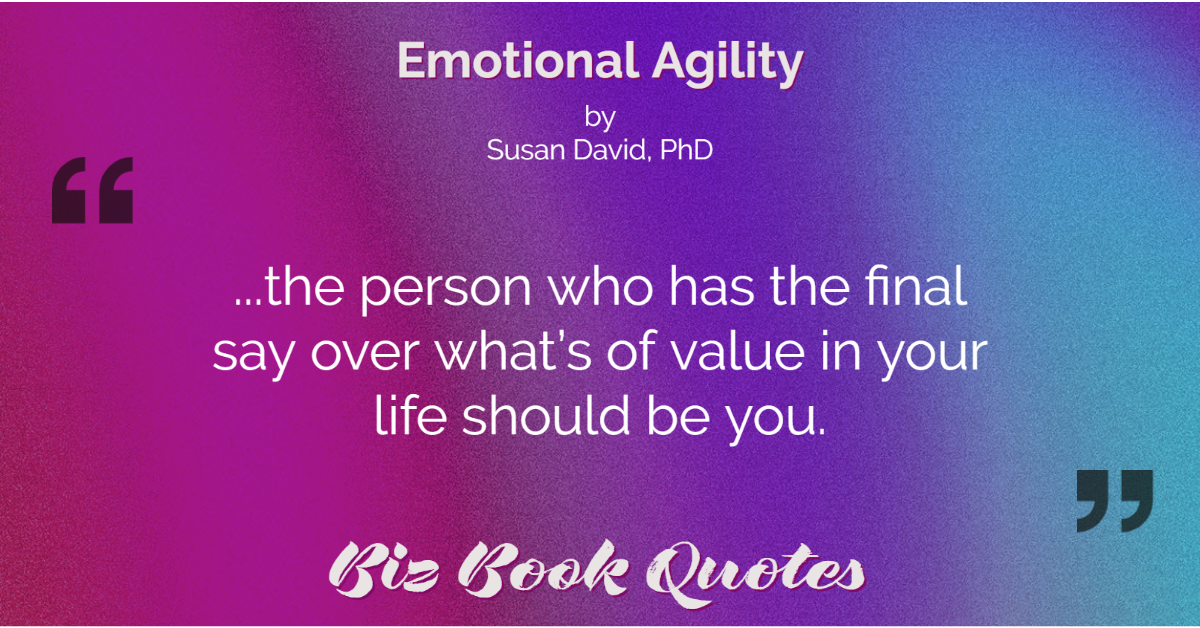
|
Emotional Agility:
…the person who has the final say over what’s of value in your life should be you.
|
80 |
|
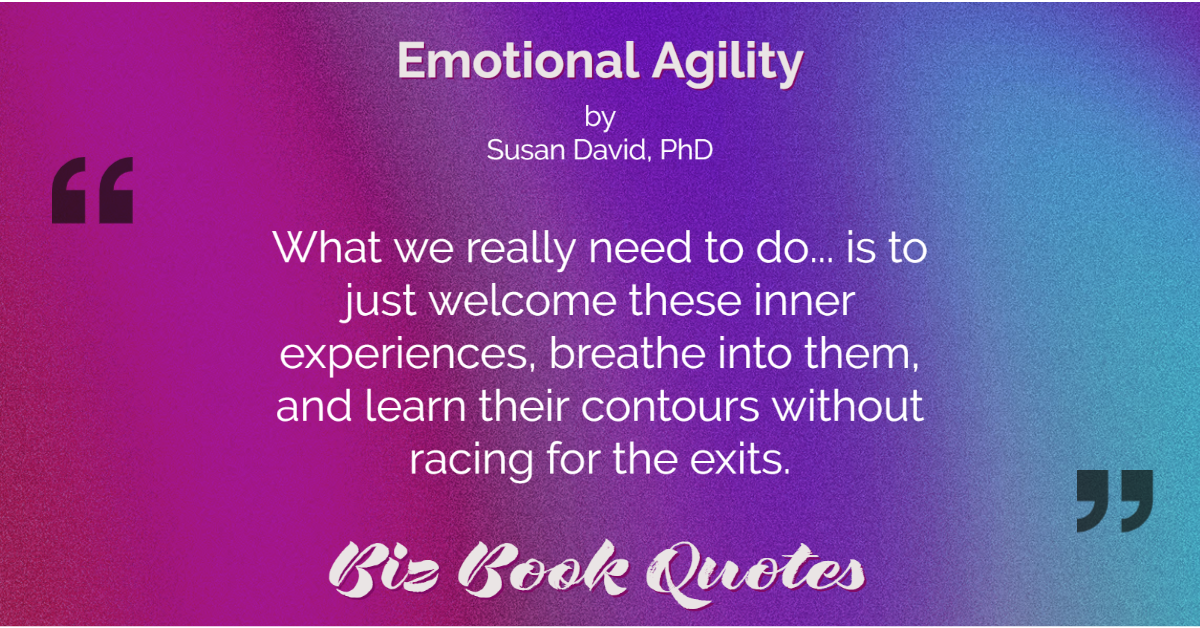
|
Emotional Agility:
What we really need to do… is to just welcome these inner experiences, breathe into them, and learn their contours without racing for the exits.
|
80 |
|
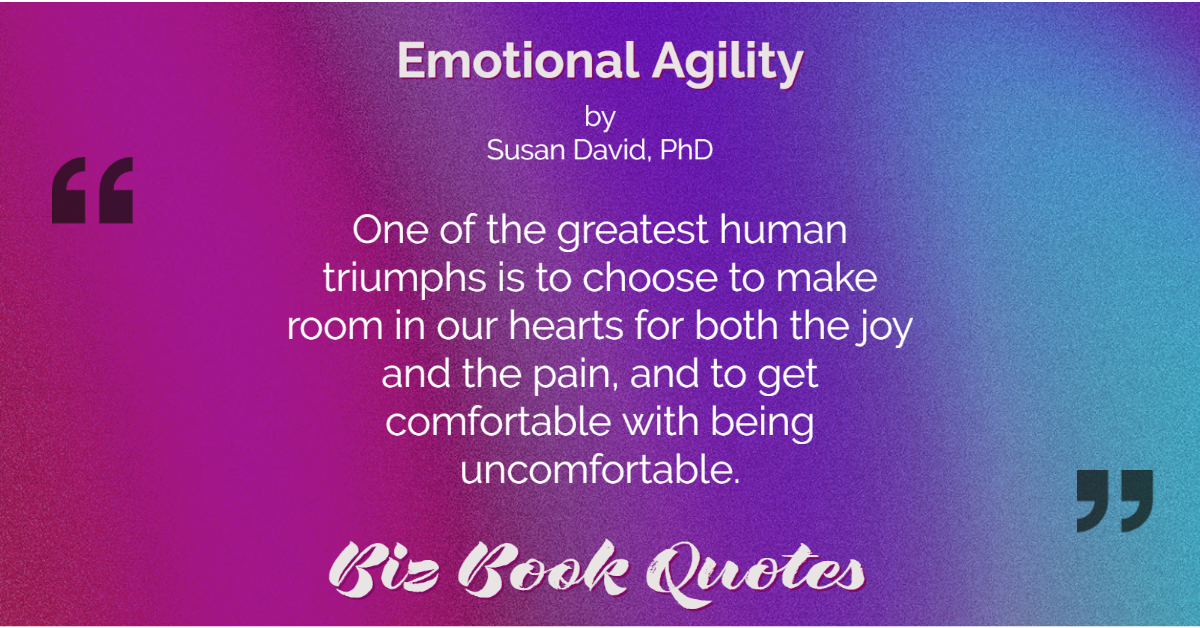
|
Emotional Agility:
One of the greatest human triumphs is to choose to make room in our hearts for both the joy and the pain, and to get comfortable with being uncomfortable.
|
81 |
|
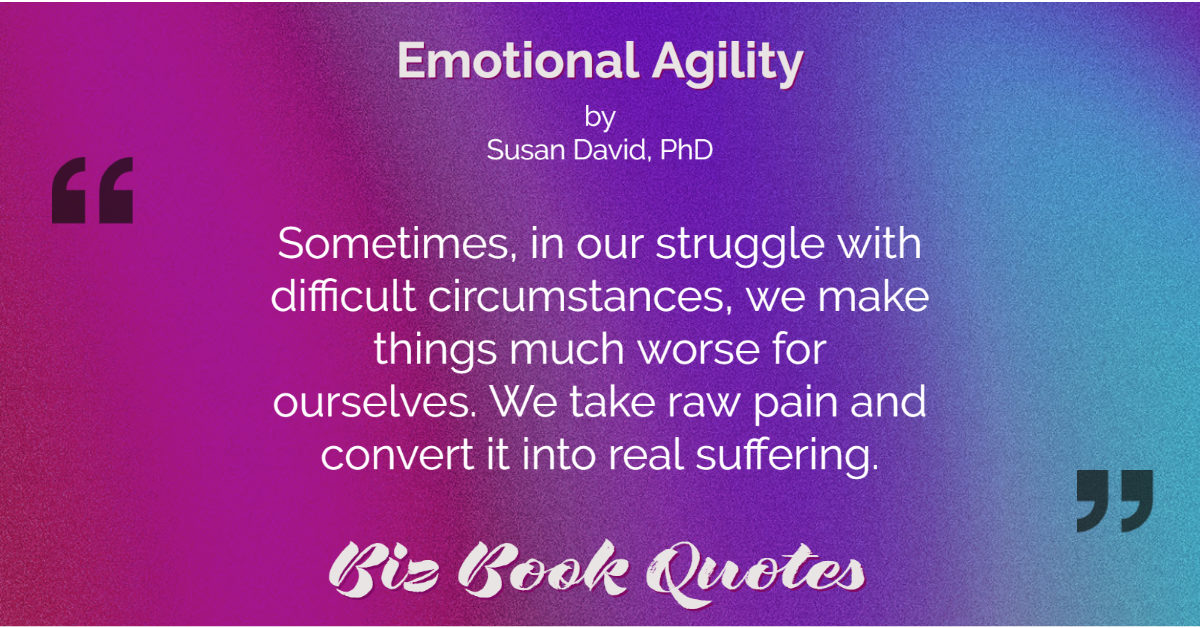
|
Emotional Agility:
Sometimes, in our struggle with difficult circumstances, we make things much worse for ourselves. We take raw pain and convert it into real suffering.
|
81 |
|

|
Emotional Agility:
If we can’t label what we’re feeling, it becomes difficult to communicate well enough to get the support we need.
|
84 |
|
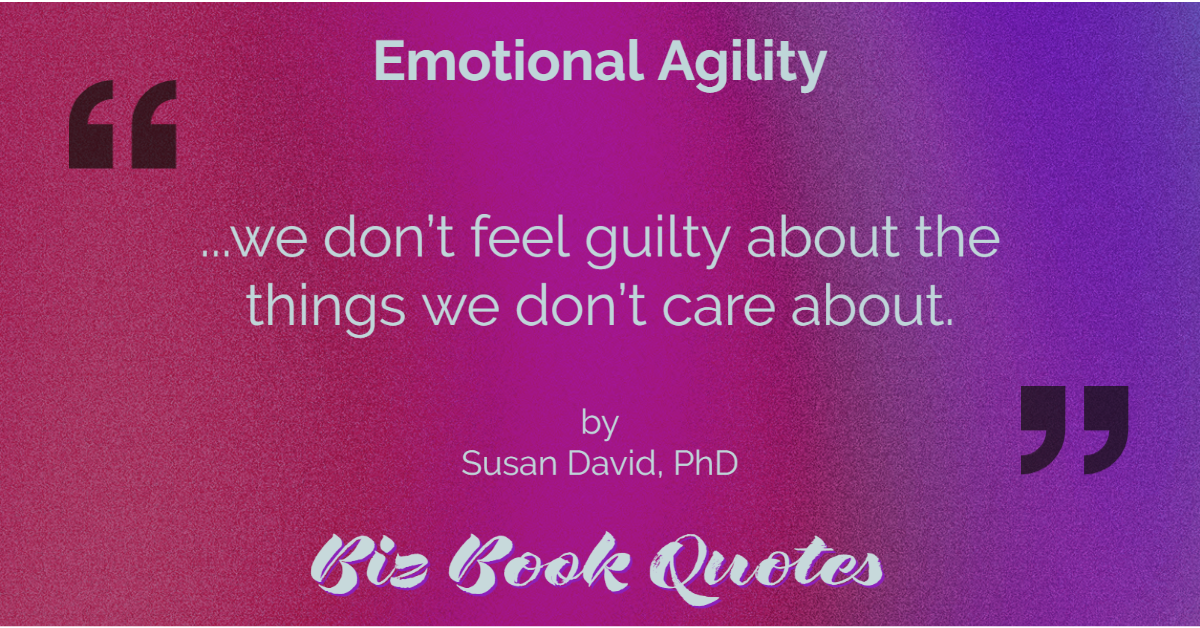
|
Emotional Agility:
…we don’t feel guilty about the things we don’t care about.
|
85 |
|
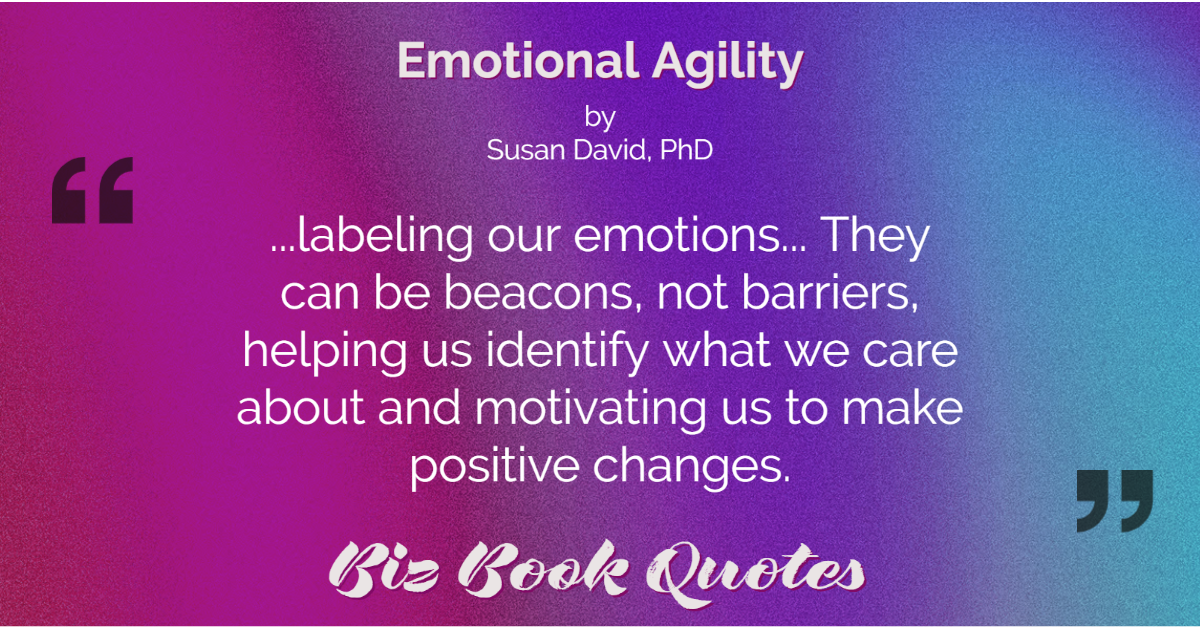
|
Emotional Agility:
…labeling our emotions… They can be beacons, not barriers, helping us identify what we care about and motivating us to make positive changes.
|
85 |
|
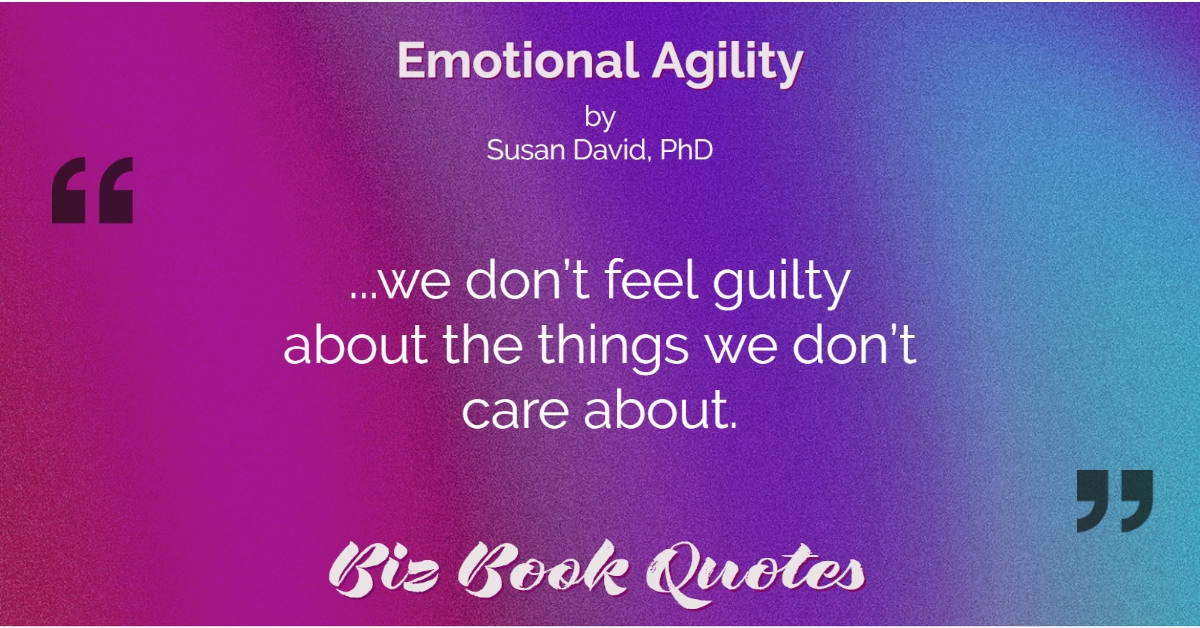
|
Emotional Agility:
…we don’t feel guilty about the things we don’t care about.
|
85 |
|
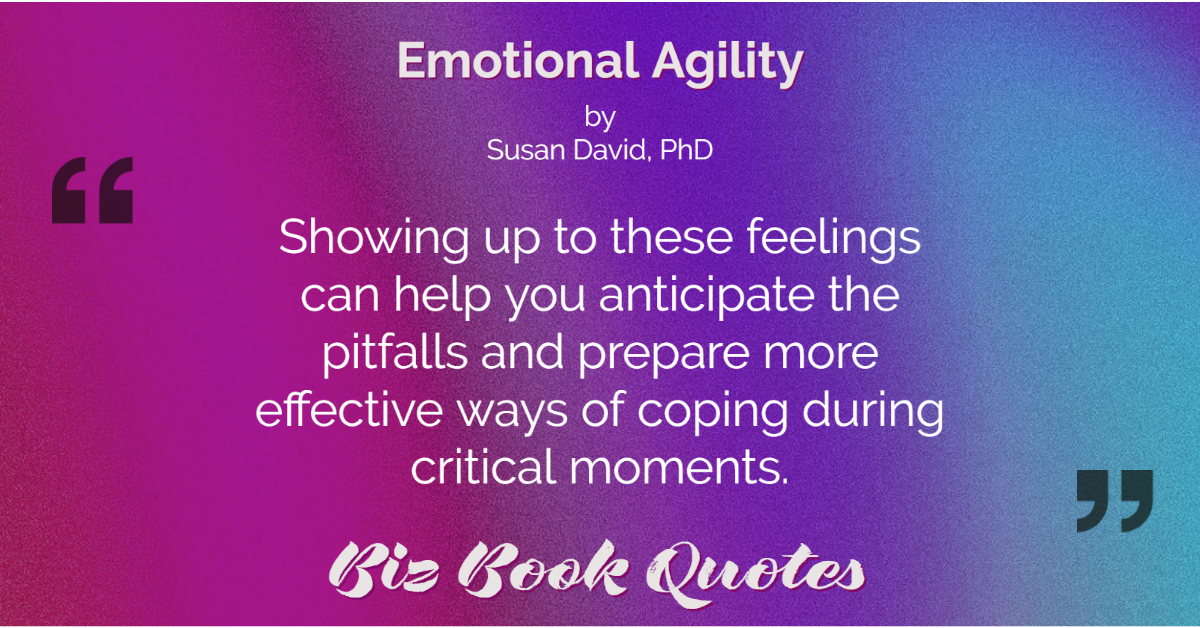
|
Emotional Agility:
Showing up to these feelings can help you anticipate the pitfalls and prepare more effective ways of coping during critical moments.
|
86 |
|

|
Emotional Agility:
In each study, Pennebaker found that the people who wrote about emotionally charged episodes experienced a marked increase in their physical and mental well-being.
|
90 |











